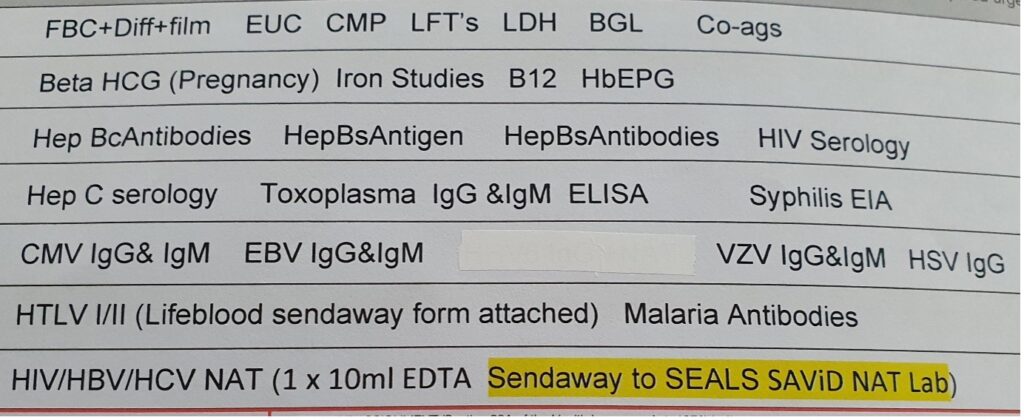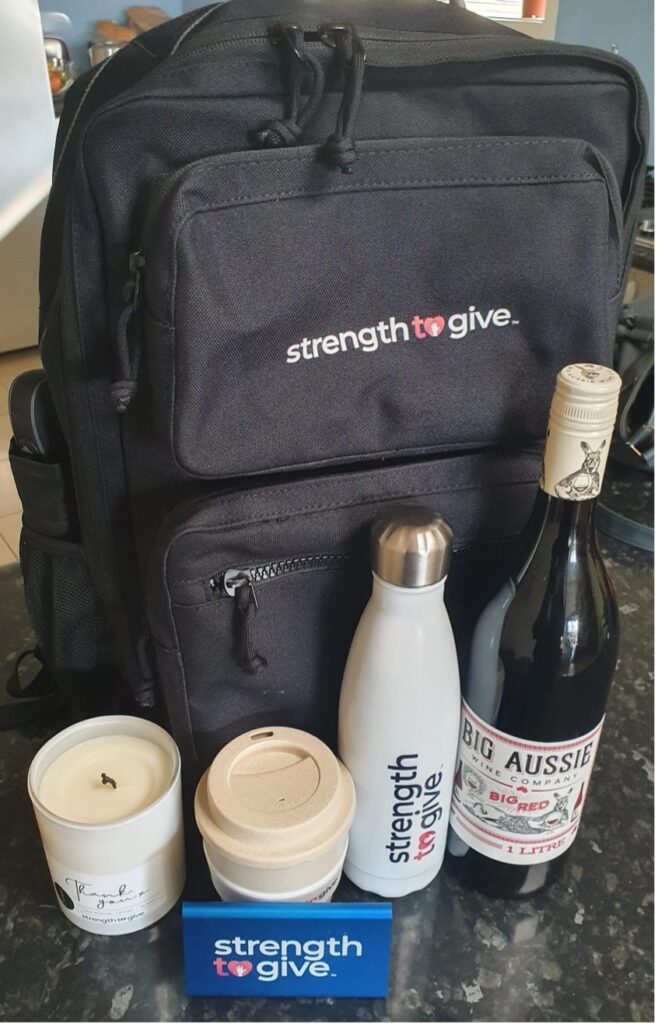Here’s what happens when you join the registry and turn out to be the perfect match for a patient in need.
When you donate blood, you can choose to get tissue-typed for the Australian Bone Marrow Donor Registry.
There’s a good chance that you’ll never be a match for someone, but the database is about having as many people as possible. You fill out a very quick form about your ethnic heritage, along with the usual lifestyle risk factors questionnaire you fill out when you donate blood. During your donation, a few extra sample tubes are taken and sent off to for testing.
That is the end of the story for a lot of people. You may never be a match and never donate bone marrow.
But you might get a call.
How it started
About a year after I joined, I was called on as a potential match. I was not the only potential match for the person and I might not be the best match, but they wanted to double-check my tissue type, so I got a few more samples taken.
The potential donors who were not chosen would not hear back, but if you’re the selected match for the recipient they will contact you within three months.
Again, this could have been the end of the story …
You’re it
I got called a month later. I was told nothing about the recipient except that they were in urgent need and the process needed to be expedited. That being said, it still required a lot of time.
I was asked to donate surgically, as this was the best method for the recipient. Bone marrow is often the choice for paediatric donation because if the recipient was physically larger than me, I would not have enough bone marrow for them and a peripheral blood collection of stem cells would be the preferred collection method. There’s also less chance of graft v host complications with a bone marrow donation.
There was another round of tests to get through, and I had to be flown interstate for them.
Flights and accommodation were booked for me; my donation coordinator at the ABMDR was in constant contact with me about my schedule and needs and took care of all the planning and cost.
I spent half a day in the hospital, enjoying a variety of tests. I was chaperoned around by a lovely person who took me to a physical exam, an ECG, a covid swab, and a chest x-ray. I filled up over a dozen tubes with my blood and had discussions with a variety of people about the procedure, the anaesthetic, and the care regimen before and after the surgery.

Waiting
The hospital where my tests were done needed 10 business days to clear me fully for donation, and the hospital where the recipient was needed 10 more days after that before they could approve me as the donor. Knowing that this recipient was really sick and there was this huge waiting period before they could get what they needed was a bit frustrating, but I understood that everything had to be above board and checked multiple times BECAUSE they were so sick.
For the week leading up to receiving my bone marrow, the patient would be given chemotherapy and radiation to ablate their immune system. This would ensure that their body didn’t fight my bone marrow. This also meant that if there was a problem with collection, the patient may die. They were already unwell and immunocompromised to the point that they might die without my donation, and then they were given a week of immune system-depleting poison on top of that.
I was worried about getting sick leading up to my donation so I went back to wearing masks and socially distancing. This came very naturally after two years of covid, but the people around me had been released from these mandates and weren’t having it. Maskless people were coughing into their hands and then groping every available avocado to find one of desired ripeness. I was ducking and weaving through the aisles at Woolies, pushing trolleys and unsupervised children into the paths of others’ indiscriminate droplets.
It would still potentially be possible to donate my bone marrow if I was sick, but if I was evaluated as being too sick for it then my recipient would have to wait even longer or maybe the whole process would have to be started over again with the next best match. My recipient could die waiting because someone who didn’t know they were sick sneezed onto the box of cereal that I then picked up.
Two weeks out from my surgery, my partner came home sick from work. We’d made it more than two years into the pandemic, I a healthcare worker and he a cop in the heart of Sydney, somehow against all odds avoiding covid. But finally, we had got it.
The timing was awful. I got a secondary infection and was sick as a dog for weeks, and they pushed my collection back a month. I couldn’t stop imagining this worried family and my potentially paediatric recipient, waiting for me and hoping death didn’t arrive before my bone marrow did. The silver lining was that they hadn’t started chemo yet, which is known as the point of no return with bone marrow donation where if the donor has to pull out, recipient death is highly likely.
Because it was postponed for a month, all the blood tests needed to be redone also because they need to be within a certain time frame. Lucky me. And the day before surgery I needed to fill up another six tubes and have a PCR.
But finally, the surgery arrived.
The procedure
I was a little bit relieved that I wasn’t donating peripheral blood stem cells. I didn’t have to spend the days leading up to donation self-injecting growth hormone, and then spend an entire day with needles in both my arms.
I’m very comfortable with surgery. You go in, chat to some nice nurses, get into a comfy gown, and get wheeled around everywhere. Then they knock you out, stab you with some sharp utensils, and you wake up feeling euphoric and get handed a sandwich. Not a bad way to spend a day.
Plus, the flattering hospital gown and transparent disposable underwear (which seem to perform zero function) that you put on before the surgery are only complimented by your disinfectant-coloured back and butt skin post-op.
Everyone was very lovely – they refer to it as “philanthropic surgery” and so they put you up first and try to make your day really easy on you.
The recovery
The first few days were pretty rough. It was hard to get comfortable and I felt really delicate. But after a week I was pretty much back to normal – just fatigued with some fresh new scars.
I was pretty shocked by how big the actual holes were in my back. Not big enough to require stitches but big enough that I felt if I looked in at the right angle, I would be able to see all the way into my bone. I wasn’t expecting the muscle soreness to stick around for so many weeks either, but everyone has a different experience and the pain is closely related to how much marrow they take. As my lovely hospital coordinator put it, the more they have to take, the more they have to “dig around in there” and the longer you’re sore.
The ABMDR contacted me at 72 hours and at one week; they’ll contact me at three months, and then annually for the next 10 years. You don’t hear anything about the recipient, though. After three months, they can request information from the recipient’s hospital but it’s under no obligation to give it.
I have no idea if my person survived; there’s no easy Scrubs-style wrap-up to tell me how everyone turned out at the end of my episode.
I gave up time and freedom to do this – I had to take a week off work/study, prolonged muscle pain, no gym or heavy lifting for a month, and I had to rely on my partner for a lot of things – but if my recipient needed more, I would do it again. What sort of person would I be if a couple of weeks of inconvenience wasn’t worth someone’s life to me?
If given the opportunity to save someone’s life in this way, you should take it. You are the best, or potentially only person that can save them and at the end of the day, it’s easy to be a hero.
Also, you get swag and a litre of wine.

Laura Andronicos is a TMR production assistant and junior reporter.


